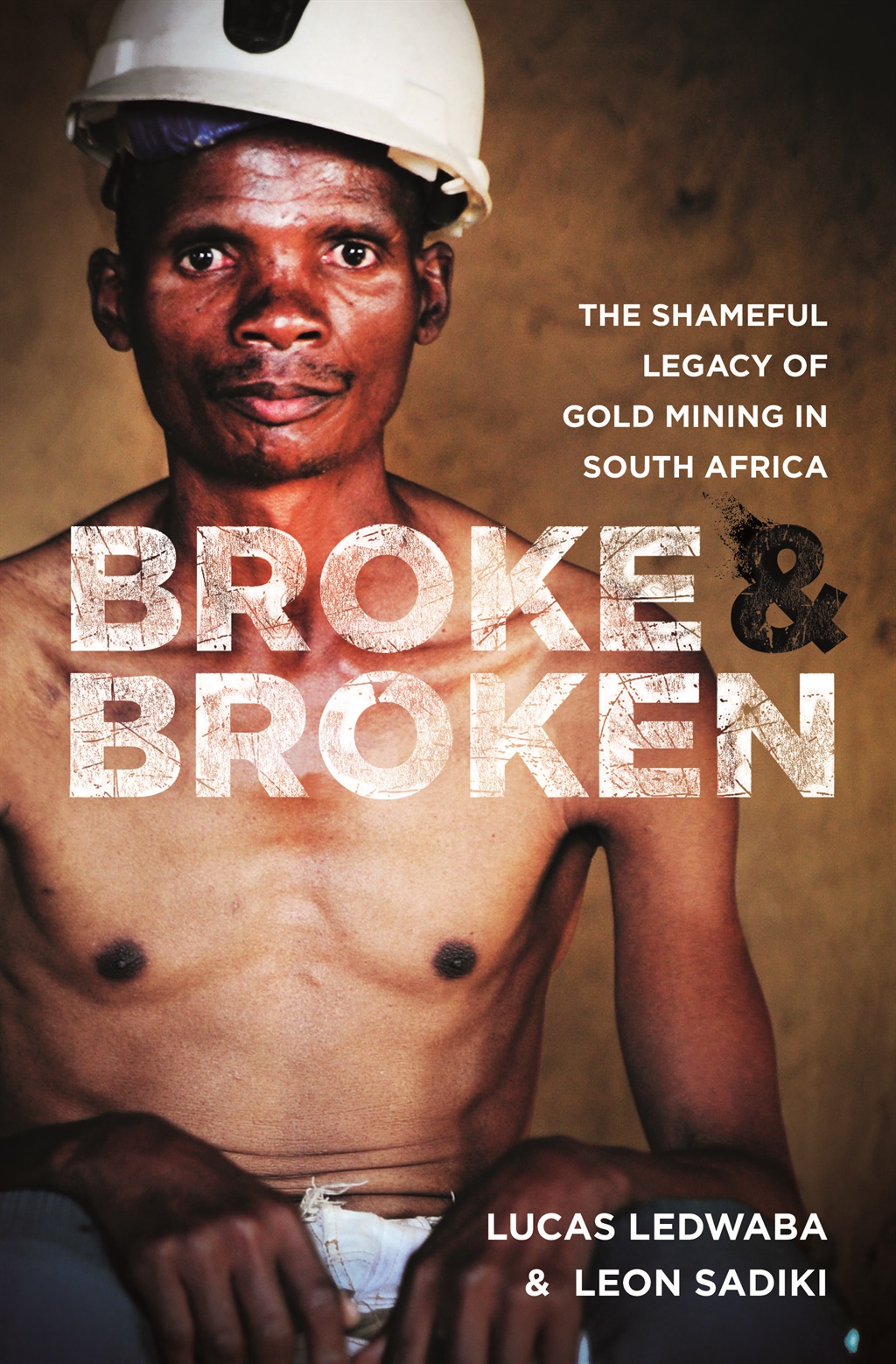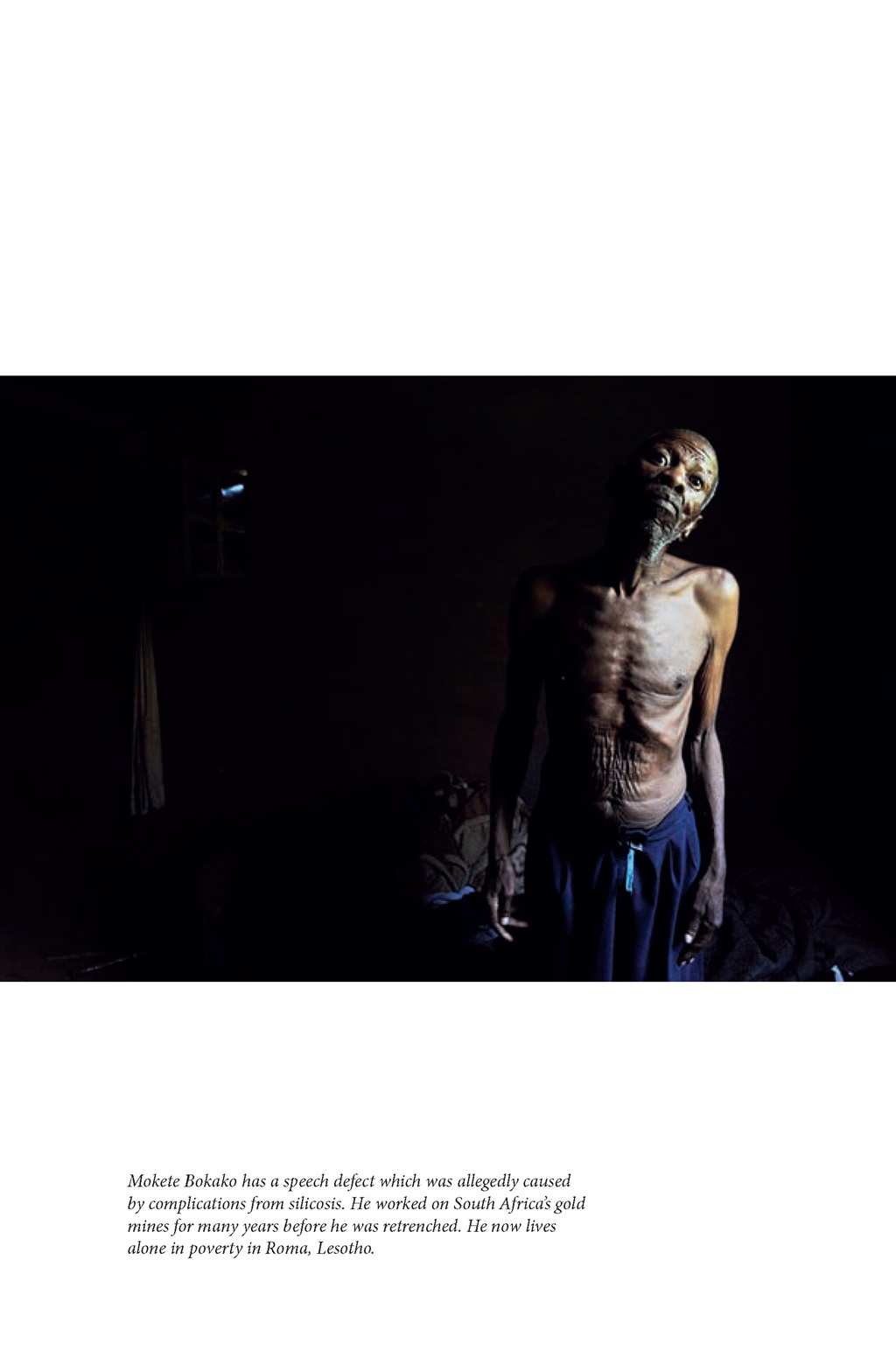
A full bench of the Johannesburg High Court endorsed an agreement between mining companies and lawyers for gold mine workers who contracted silicosis and tuberculosis.
The law firms and mining companies reached a R5-billion settlement in May last year after a lengthy litigation process and negotiations between the parties.
The companies include African Rainbow Minerals‚ Anglo American SA‚ AngloGold Ashanti‚ Gold Fields‚ Harmony and Sibanye-Stillwater.
The agreement means that all eligible workers suffering from silicosis and/or TB who worked in these companies’ mines from March 12 1965 to date will be compensated.
There are 10 classes of claimants‚ including dependents of deceased mineworkers who – once properly certified – would be eligible for a benefit ranging from R50 000 to R500 000.
In 2016 journalist Lucas Ledwaba and photo journalist Leon Sadiki investigated the impact of silicosis on ex miners and their families and published the book Broke & Broken – The Shameful Legacy of Gold Mining in South Africa [BlackBird/Jacana].
The book is available at selected bookstores and retails at R225.
CHAPTER 11: The legal battle against the mining houses
In December 2012, Richard Spoor Attorneys filed papers before the South Gauteng High Court in a bid to compel 33 mining houses that owned the gold mines in question, from 1965 to present, to compensate former mineworkers and the dependants of those who died during the same period from silicosis and TB.
The lawyers submit that, ‘tens of thousands of former mineworkers have contracted silicosis as a result of breathing silica dust generated during gold mining and related processes’.
The disease is incurable. It eats away slowly at the human lungs, causing the sufferer to endure a slow, painful death.
The lawyers submit that the owners of the 78 gold mines named in the claim (see Appendix on page 165) knew of research conducted as early as 1900, that constant and long-term exposure to silica dust could lead to lung diseases such as silicosis, TB and eventually death.
Yet, even 80 years after such research was made public and the mining houses were made aware of its shocking contents, hundreds of thousands of men were still sent underground, inhaling loads of silica dust without the necessary protective gear which the mining houses were required, by law, to provide to the mineworkers.
In 1969, a chief ventilation officer had asked a mine ventilation symposium of the Chamber of Mines Anti-Dust Campaign: ‘Why do men go back into development ends early? Why do they remove the rock when it is dry? We – by we I mean the mining industry – make it financially worthwhile for the man underground to break regulations in order to earn more money. We mine with multiblast development ends, we push the multiblast development ends through, we want to get three blasts, four blasts, five blasts a shift. We pride ourselves, we break records. How do we break the records? By people pinching minutes, by going in early. In other words, in our bonus system for mining, we make it worth the man’s while to break regulations in order to earn additional money. I think a bonus system for a man who works safely, for a man who has low dust counts, has definitely a lot more merit than any of these anti-dust campaigns we are trying to push at the moment. If we think about it very carefully, the man who scrapes dry, does so because there is no water available, or because he has no water hose. Why does he scrape dry? Because he wants his pay, he wants his money for the rock he produces. In other words, he is interested in financial gain and if his health suffers as a result of it, he couldn’t give a damn.’
Lawyers for the former mineworkers say the mining houses breached regulations in that they ‘caused or permitted mineworkers to travel and to work in areas that were not properly ventilated to maintain safe and healthy environmental conditions for the workmen and wherein the ventilating air was such that it did not dilute and render harmless any noxious gases and dust in the ambient air’.
They also say the mining houses allowed mineworkers ‘to enter or remain in parts of the workings of the mine where the air contained harmful dust perceptible by sight, smell or other senses without requiring the defendant (mineworkers) to wear effective apparatus approved for the purpose by the Chief Inspector to prevent the inhalation of dust’.
They also failed to ensure that blasting procedures were so arranged that mineworkers were not exposed to harmful dust, smoke, gas or fumes from blasting.
They also submit that the mining houses failed to ensure that the concentration of dust in the general body of the air at any place where persons were required to work or travel, under normal working conditions, did not exceed the standards specified from time to time by the director-general.
The lawyers for the former mineworkers say the mining houses ‘knew, or ought reasonably to have known that inhalation of harmful quantities of respirable free silica dust generated by the activities of and related to gold mining can cause pulmonary condition known as silicosis, which is disabling and potentially fatal (whether or not accompanied by any other disease)’.
They also say the owners of the mines should have known that ‘there was a high prevalence of silicosis on South African gold mines generally, and on the mines owned and/or controlled by the mining houses; there were high dust levels and inadequate dust monitory, dust prevention and dust protection methods on the mines’.
The lawyers go further to argue that the mining bosses knew or should have reasonably to have known that the risk contracting silicosis could be materially reduced by a number of methods.
These included informing mineworkers of the risk posed by dust, identifying the sources of the dust, preventing or minimising the escape of dust into the air through the introduced appropriate engineering controls and proper mine design; evacuating contaminated air from the workplace and diluting silica dust that remains in the air to harmless levels through adequate and effective ventilation.
The lawyers submit that the ramifications of mineworkers contracting silicosis are that as breadwinners, they have lost certain amenities and have been left with certain disabilities which include, abnormal respiratory systems and chest radiographs, reduced lung function consistent with their respective levels of silicosis, including some degree of airflow obstruction.
These conditions, they say, are permanent and will deteriorate over time. They also suffer from permanent intermittent chest pains and coughing, breathlessness when walking at a normal pace on level ground, night sweats, weight loss, general weakness and reduced life expectancy.
However the lawyers argue that the precise extent of this is not known, although many of the deceased former mineworkers listed in the lawsuit died long before the normal retirement age of 65.
And so the long wait for justice and compensation continues for many of the men that may never recover their health, even at the time of writing in June 2016.




 Publications
Publications
 Partners
Partners









